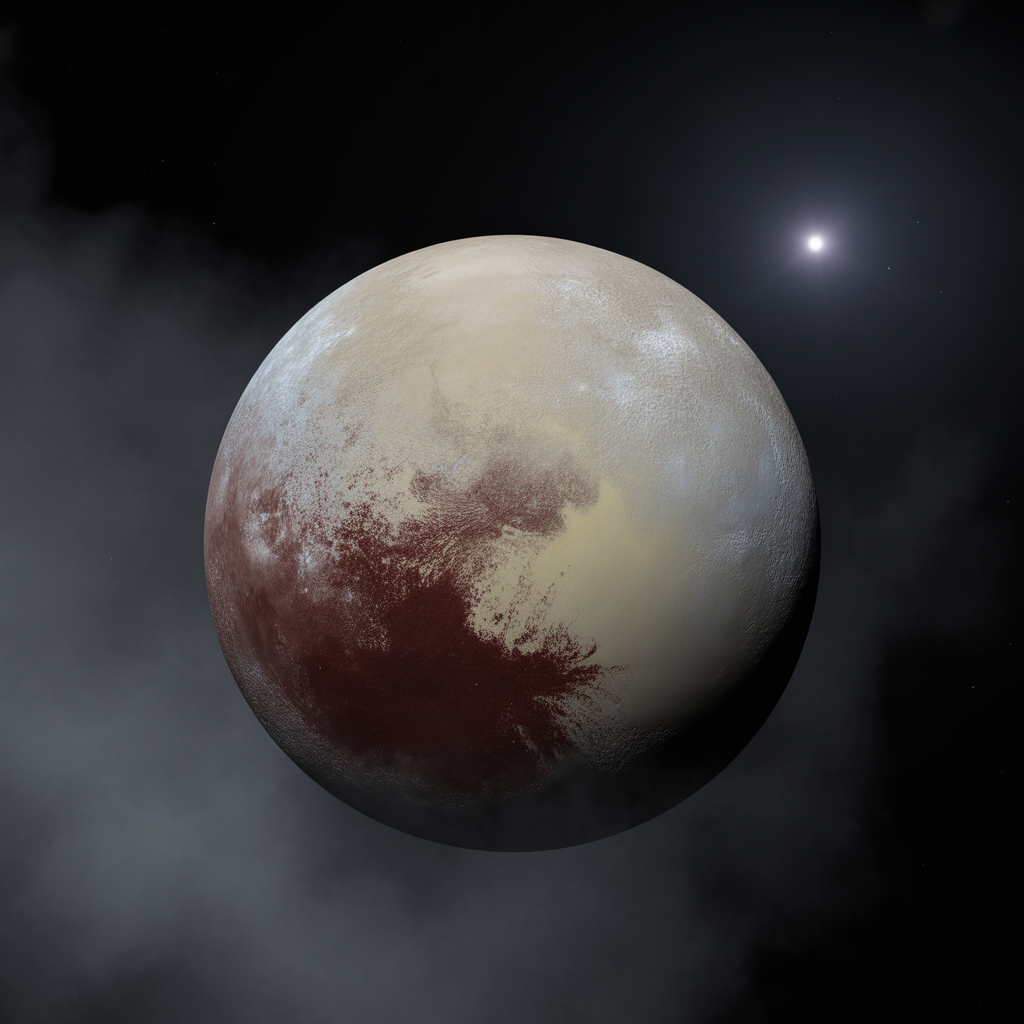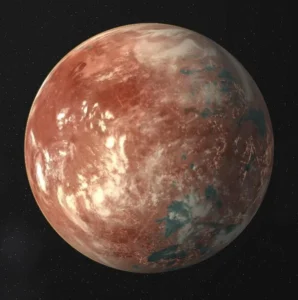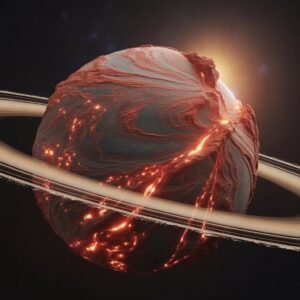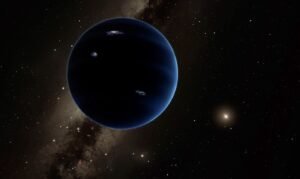Pluto resides in the Kuiper Belt, a region of icy bodies beyond Neptune. It is smaller than Earth’s Moon and is the largest known Kuiper Belt object by volume, though it is less massive than Eris.
Pluto was reclassified as a dwarf planet following the International Astronomical Union’s (IAU) definition of a planet, which includes three criteria:
- The object must orbit the Sun,
- Its gravity must be strong enough to make it nearly round in shape,
- It must have “cleared the neighborhood” around its orbit.
Pluto does not meet the third criterion, as it shares its orbital zone with other objects in the Kuiper Belt.
Pluto is primarily composed of rock and ice, with a mantle of ice made largely of nitrogen. Its surface features include mountains, valleys, and craters. It also has a thin atmosphere composed mainly of nitrogen.
Pluto has five known moons: Charon, Nix, Hydra, Kerberos, and Styx. Charon is exceptionally large compared to Pluto, resulting in a “double dwarf planet” system where both bodies orbit a common center of gravity located between them.
NASA’s New Horizons mission provided the first close-up images of Pluto and its moons in 2015, revealing remarkable details about its surface and atmosphere.
Pluto is extremely cold, with average surface temperatures ranging from –226 to –240 degrees Celsius.








